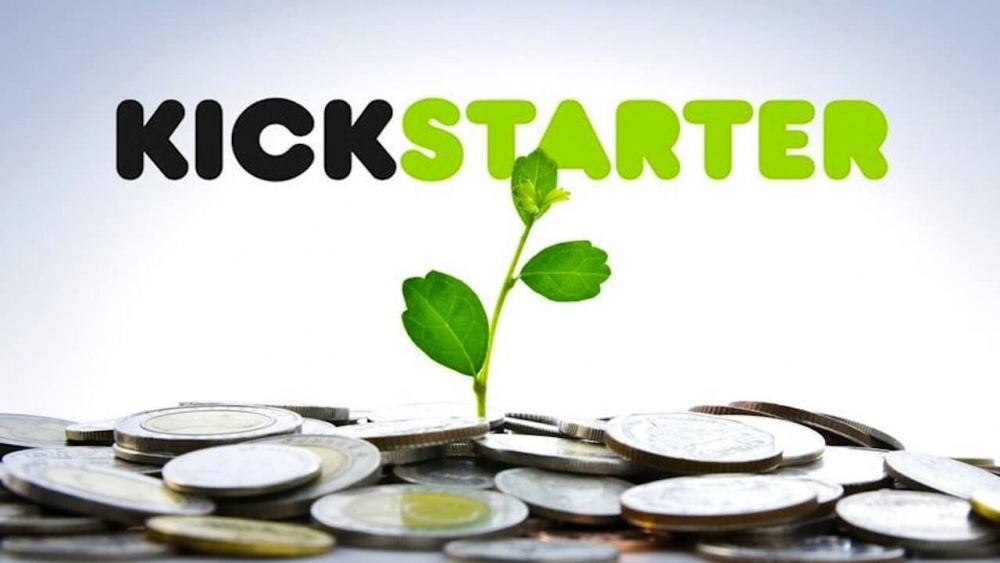Kickstarter Odds – Which Tech Projects Will Fail?
By Trevor Dueck in Entertainment
Updated: January 17, 2018 at 9:39 am ESTPublished:

There are always a slew of exciting new tech projects looking for crowdfunding on Kickstarter, and most that receive full funding do produce results. But according to a new study, ten-percent of Kickstarter projects go down in a blaze of glory.
A study by Ethan Mollick at the University of Pennsylvania’s Wharton Business School (and commissioned by Kickstarter) surveyed nearly 500,000 backers. Kickstarter published the findings on their site. In his analysis, Mr. Mollick wrote the following:
Project backers should expect a failure rate of around 1-in-10 projects, and to receive a refund 13-percent of the time. Since failure can happen to anyone, creators need to consider, and plan for, the ways in which they will work with backers in the event a project fails, keeping lines of communication open and explaining how the money was spent. Ultimately, there does not seem to be a systematic problem associated with failure (or fraud) on Kickstarter, and the vast majority of projects do seem to deliver.
With that framework in mind, I decided to look for some of the most interesting tech projects on the platform and set the odds on which will succeed given the necessary funding. The advancements that inventors and start-up companies are making really is astounding. But are some proposals a little too ambitious?
Odds on Kickstarter Projects Succeeding*
*”Succeeding” in this context means not failing, as per Mollick’s study.
BioLite BaseLantern: 1/9
From the people who brought us the BioLite Campstove comes the BaseLantern. This product was a massive hit on Kickstarter, garnering 4,860 backers who pledged $816,966 to help bring it to life.
The BaseLantern allows you to bring light everywhere without the need for batteries. You’ll also be able to share its energy with things like your phone while you’re off the grid.
This flatpack lantern is easy to store and has smart controls that let you alter the lighting to set the mood. The company has a high success rate on Kickstarter and this project has basically already succeeded; you can already order the BaseLantern online.

Vi. Artificial Intelligence Personal Trainer: 3/7
When I first saw this project – bio-sensing earphones that supposedly help you reach your fitness goals – I had some doubts. However, after watching the video, I admit that I’m pretty impressed. That’s the power of a slick video presentation!
This personal AI trainer will supposedly keep you motivated, track your stats, and coach you to success while letting you enjoy your favorite music and make personal calls without ever touching a button.
This is one of the most popular tech items on Kickstarter and has already surpassed its initial goal of $100,000. (As I write this, they’re closing in on $500,000.) If it works like they say it does, it has the potential to revolutionize the fitness industry.
No word on whether you can change the dulcet female voice to Arnold Schwarzenegger’s motivating “Don’t be a girly man!” But that would be the cherry on top of this already delicious fitness sundae.
http://www.youtube.com/watch?v=_kH5iXm8P5I&width=420&height=315
ROKduino: 2/3
Some kids play with Lego; others learn how to program and build robots.
Where was ROKduino when I was a kid? This is a fantastic idea that gives the little ones an introduction to coding. Just plug the ROKduino block into your computer and the drag-and-drop basic programming instructions provide a breezy introduction to coding.
The developer, Rokenbok, has been creating popular engineering toys for the last 20 years. With their fantastic track record, this company is a no brainer to back and I can’t see the ROKduino failing.

Junior Explorers: 9/11
Anytime you can merge today’s technology with education, you probably have a winner. The Junior Explorers app is an interactive game that sends kids on virtual “eco-missions” to help them learn about wildlife and ecosystems around the globe.
Kids will go on missions to solve mysteries in nature, conquering the eco-challenges facing animals in myriad habitats. Essentially, Junior Explorers will improve kids’ problem solving skills and introduce them to the concept of environmental protection.
This app looks like a lot of fun, and although Junior Explorers has already met its targeted financial-backing goal, this product continues to be a popular campaign on Kickstarter.

Gululu Interactive Water Bottle for kids: 9/11
Apple already came out with a smart water bottle for those who wanted to keep track of their daily fluid intake. Now Gululu is taking the smart tech to another level by creating smart water bottles for kids.
Not only do these bottles look cool, they’re a fun way to show kids the importance of drinking water. Parents can login from their smartphone or computer and see how much water their kids are drinking.
This app has already surpassed its $100,000 goal and is currently one of the most popular crowdfunded projects on Kickstarter. It’s probably not going down the drain. (Rimshot.)

Solos Smart Cycling Glasses: 1/1
You knew it was just a matter of time before more smart glasses hit the market. Although we’re not seeing a lot of Google Glass out on the street, there is a niche market for these augmented reality bike glasses that were developed with the USA cycling team.
These sunglasses will offer performance tracking, precision training tools, and tons of other useful features (like blocking out harmful UV rays, ’cause they are still sunglasses, after all).
They’re not just made for the professional. Weekend warriors are equally in need of eye protection and cycling attracts a lot of data-hounds. Given that the company has already surpassed its goal of $50,000, there’s a good chance these glasses breakaway from the peloton of failure.
http://www.youtube.com/watch?v=NrGKoYYcND0&width=420&height=315
Muzo: 7/3
Who doesn’t want their own personal bubble of silence? Call me a skeptic, but apparently this technology has a chance of working. Muzo is an acoustic device that uses anti-vibration and “Billionsound” technology to minimize unwanted noise.
The Muzo has a serenity mode for those wanting to chill-out and a sleep mode for those in need of better quality shut-eye. It also has a “secret mode” that protects speech privacy through “sound masking”. It looks rather goofy, but it’s been a hot item on Kickstarter and it’s gaining momentum.
http://www.youtube.com/watch?v=5IuPd-R32ho&width=420&height=315
GoBone: Smart Dog Toy: 3/1
A lot of people have dogs and, for the most part, they’re not too smart. (The dogs that is.) GoBone is aiming to ameliorate your dog’s intellectual deficiencies with a smart toy that will keep your k-9 busy while you are out of the home for long periods of time.
This “bone” will keep your pet entertained for up to eight hours by moving, rolling, and spitting out treats! GoBone has already met its target of $60,000, but they’re still looking for more donors to get this robotic dog toy to market.
To be honest, it looks kind of goofy. But some dog lovers, who use pets as substitutes for children, will buy pretty much anything for their four-legged friend. So it has a chance.

PebbleBee Finder: 3/1
If you’re like me, you lose your keys, wallet, bags, dog, kids, and head far too much. Now there’s a great way to locate all those missing items: the PebbleBee Finder. This app takes the panic and annoyance out of losing something. Just attach the small metal tag to valuables, download the app to your smart phone, and voila, it shall never be lost again (as long as you don’t lose your phone).
Not only will the small tag beep to help you find the items, but it will also show up on the app’s GPS tracking system. This way you can not only blame others for your lost items, but provide proof that they were the ones who put your keys behind the couch.
This app has a chance of making it, but there are other items on the market that do the same thing. We shall see.

Internet of My Things: 99/1
This one is a head scratcher, but maybe it’s just not for me. Internet of My Things will let you put codes on everything you own and upload them to a cloud. This way you have an online inventory of your things. It also allows you to trade and sell your junk online.
Look at this as social media for your clutter.
This idea just launched on Kickstarter and, so far, it has been slow going. Is it a great idea? Will it take off? Odds are not in it’s favor. There is already an app out there called SquareTag that does something similar. It’s apparent that we are headed towards virtual inventory but this looks terrible and they don’t even have a proper marketing video.
Feature photo Credit: IMustDestroyAll Youtube (https://www.youtube.com/watch?v=xg-IZeN-OK4)

Entertainment Writer
Trevor was Sports Betting Dime’s resident geek (aka: entertainment writer) from 2016-18. He also moonlights as a national film reviewer for other publications. He comes equipped with diplomas in marketing and broadcast journalism with a PHD in couch lounging.



